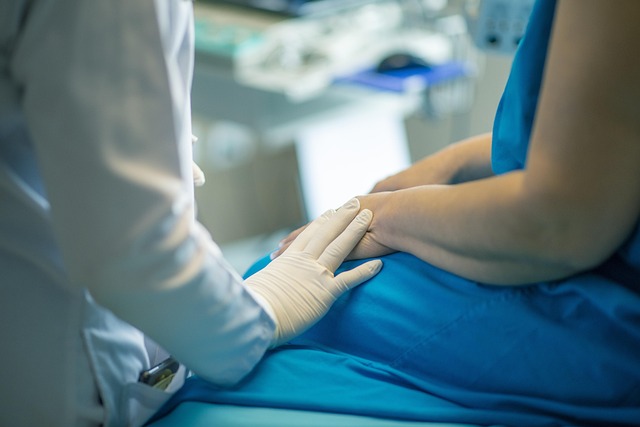Unveiling the Art of Rhinoplasty: Sculpting Beauty and Function
Rhinoplasty, commonly known as a "nose job," is a transformative surgical procedure that reshapes the nose, enhancing both facial aesthetics and breathing function. This intricate operation has become increasingly popular among those seeking to refine their appearance or address structural issues. As one of the most complex and nuanced facial plastic surgeries, rhinoplasty requires a delicate balance of artistry and medical expertise.

Why do people choose to undergo rhinoplasty?
There are numerous reasons why individuals opt for rhinoplasty. Some seek to correct physical abnormalities resulting from injury or birth defects, while others desire to improve their facial harmony and boost self-confidence. Common motivations include:
-
Reducing or increasing the size of the nose
-
Changing the shape of the tip or bridge
-
Narrowing the span of the nostrils
-
Adjusting the angle between the nose and upper lip
-
Correcting breathing difficulties caused by structural defects
For many, rhinoplasty is not merely about vanity but about feeling comfortable and confident in their own skin.
What are the different types of rhinoplasty procedures?
Rhinoplasty techniques have evolved significantly over the years, offering patients a range of options tailored to their specific needs:
-
Open Rhinoplasty: This technique involves making an incision across the columella, providing full access to the nasal structures. It’s often preferred for complex cases.
-
Closed Rhinoplasty: All incisions are made inside the nostrils, leaving no visible external scars. This method is suitable for less extensive changes.
-
Tip Plasty: Focused solely on reshaping the nasal tip, this procedure is less invasive and has a shorter recovery time.
-
Revision Rhinoplasty: For patients unsatisfied with previous nose surgeries, this corrective procedure addresses lingering issues or complications.
-
Non-surgical Rhinoplasty: A temporary solution using dermal fillers to alter the nose’s appearance without surgery.
How long does recovery from rhinoplasty take?
The recovery process after rhinoplasty varies from person to person, but generally follows a predictable timeline:
-
Week 1: Patients wear a nasal splint and experience swelling and bruising.
-
Weeks 2-3: The splint is removed, and most swelling subsides. Patients can usually return to work.
-
Weeks 4-6: Breathing improves as internal swelling decreases.
-
Months 3-6: The majority of swelling resolves, and the new nasal contour becomes more apparent.
-
Up to 1 year: Final, subtle changes in the nasal appearance continue to develop.
It’s crucial to follow post-operative instructions carefully and attend all follow-up appointments to ensure proper healing and optimal results.
What are the potential risks and complications of rhinoplasty?
While rhinoplasty is generally safe when performed by a qualified surgeon, like any surgical procedure, it carries some risks:
-
Infection
-
Bleeding
-
Adverse reaction to anesthesia
-
Unsatisfactory aesthetic results
-
Breathing difficulties
-
Septal perforation (a hole in the nasal septum)
-
Altered sense of smell
-
Skin discoloration
Choosing a board-certified plastic surgeon with extensive experience in rhinoplasty can significantly reduce these risks.
How much does rhinoplasty typically cost?
The cost of rhinoplasty can vary widely depending on factors such as the surgeon’s expertise, geographic location, and the complexity of the procedure. Here’s a general overview of rhinoplasty costs in different settings:
| Provider Type | Average Cost Range | Additional Considerations |
|---|---|---|
| Private Practice | $5,000 - $15,000 | May not include facility fees or anesthesia |
| Hospital-Based | $6,000 - $20,000 | Often includes all associated costs |
| Renowned Specialist | $15,000 - $25,000+ | Higher fees for complex cases or revisions |
| Non-Surgical (Temporary) | $600 - $1,500 | Requires regular maintenance |
Prices, rates, or cost estimates mentioned in this article are based on the latest available information but may change over time. Independent research is advised before making financial decisions.
It’s important to note that while cost is a factor, the surgeon’s qualifications and your comfort with them should be the primary considerations. Many practices offer financing options to help manage the expense of rhinoplasty.
In conclusion, rhinoplasty is a sophisticated surgical procedure that can dramatically improve both the appearance and function of the nose. Whether motivated by cosmetic desires or medical necessities, patients should thoroughly research their options, consult with experienced surgeons, and carefully consider the potential outcomes before proceeding. With proper planning and realistic expectations, rhinoplasty can be a life-changing experience, enhancing not only facial aesthetics but also overall well-being and self-confidence.
This article is for informational purposes only and should not be considered medical advice. Please consult a qualified healthcare professional for personalized guidance and treatment.






